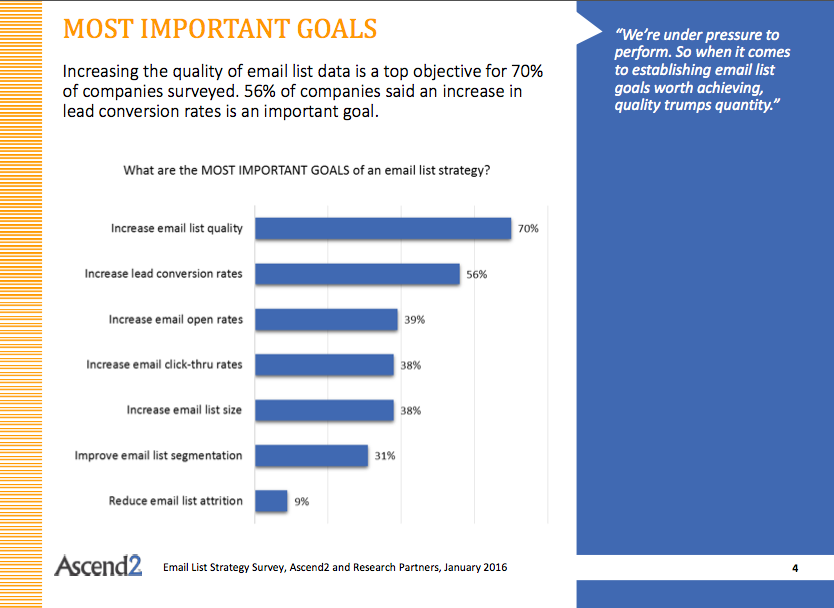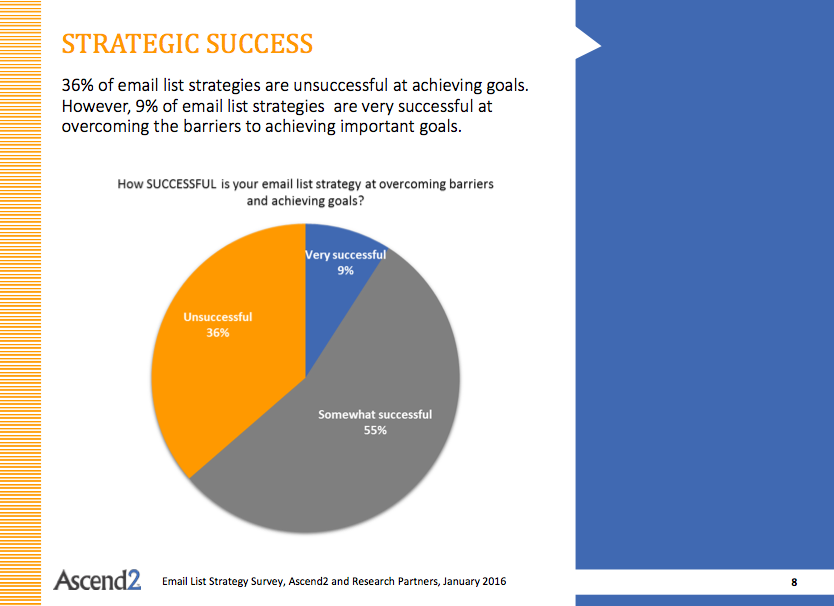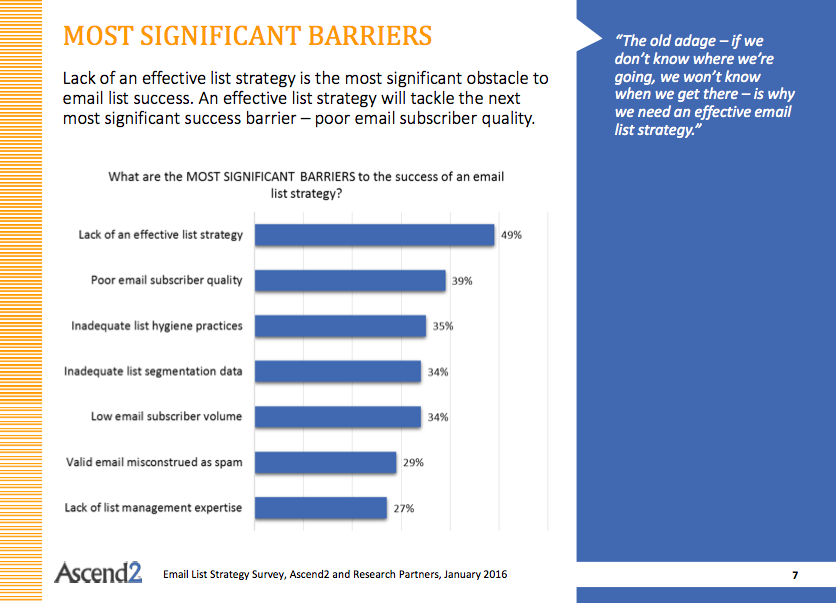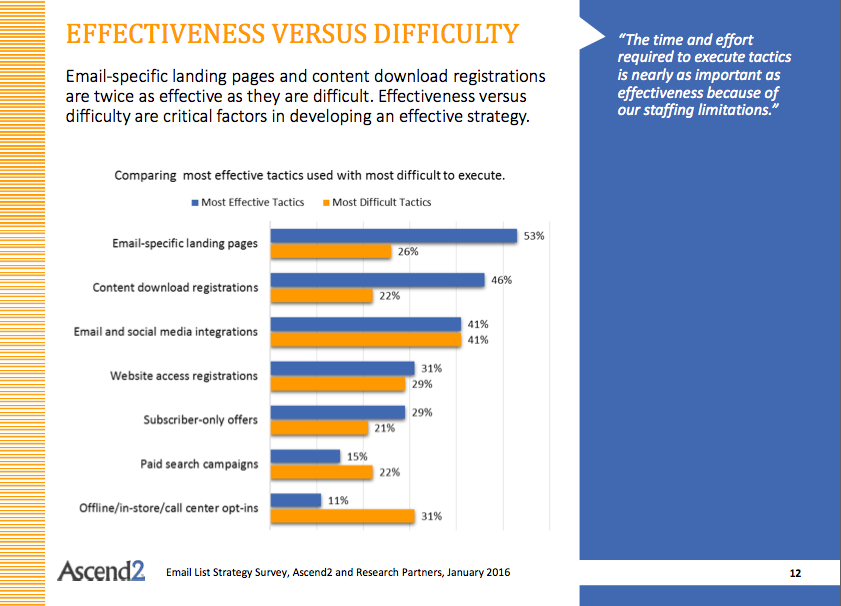As many options as marketers have now for reaching out to potential customers, email still leads as the most effective channel. But there is always room to improve, as we all know!
Some ways to improve the effectiveness of email marketing include more advanced segmentation, visual email analytics, and automated emails, among other possibilities.
But perhaps one of the most simplistic (yet effective!) ways to improve results is by simply improving the quality of your in-house email list. A recent report by Ascend2 backs up this idea.
What’s so big about an email list?
The email list is a most critical component of a successful email marketing strategy. Without a quality list of a decent size, how else will a marketer manage to get opens, click throughs and conversions, not to mention improved email deliverability?
Unless marketers are sending their emails to people who want to get them—and getting delivered to inboxes—there’s little point in even having an email marketing program…or team. Yes, email lists are critical.
Marketers want to improve quality of email lists
The importance of the email list means it has to constantly be improving in order to improve everything else that leads up to ROI. And that means it should not be left to chance but rather should be backed by a strategy…
This newest report released by Ascend2 delves into marketers’ views on Email List Strategy, and for the most part, the news is good! For one thing, marketers are focusing on list quality of quantity: 70% of marketers cited “increase email list quality” as one of their most important goals.

This is good news because it means attention is no longer focused on increasing only the list size. Obviously, 38% still cite this goal as a most important one, so it hasn’t gone away, nor should it. But the focus is by far on quality over quantity, and that I applaud!
The other good news is that 46% of those surveyed said list quality is increasing. (Meanwhile, 38% said it’s not changing and 16% said the quality is decreasing.) On the other hand, only 9% say they are successful with achieving their goals using their existing email list strategy.

Obstacles to achieving email list strategy goals
For those who aren’t seeing an increase in email list quality, what obstacles do they face? According to this research, lack of an effective email list strategy is the biggest obstacle faced by marketers, at 49%. Other significant barriers include poor email subscriber quality at 39%, inadequate list hygiene at 35%, and lack of list management expertise at 27%.

Overcoming those obstacles—easier than you think
All of that said, once you get into the strategies used and the ease or difficulty in implementing them, one can see that marketers have a good opportunity to overcome those barriers and achieve their goals, whether that goal is improving the quality of an in-house email list or something else. I say this, because the two top tactics for achieving goals also happen to be the easiest to execute, as this graph shows below:

Using email specific landing pages and offering content people want (then collecting email addresses via content download registrations) are by far the two most effective yet easiest to implement ways to achieve email list strategy success. Third on the list is integration with social media, which ranks well for effectiveness at 41% but also ranks high in difficulty at 41%.
Why do these two tactics work so well with so little difficulty? Because in both cases marketers are offering something of value that people say “yes” to with their email addresses.
Remember that an email address has a value and so is bartered for something else of value. If you want my email address and you offer me nothing in return, I probably won’t hand it over. However, if you offer me something I want in exchange, then yes, I will “trade” you for my email address.
That’s what I suspect is going on here. With email specific landing pages, people are told what they will get in exchange for signing up and if they like the “deal,” they will subscribe. With content download registrations, people want what is being offered and so they are willing to hand over their contact information in order to get it.
Now, what about integration with social media? That probably ranks as high as it does in effectiveness because of content as well. People won’t blindly sign up for your lists without knowing anything about your brand, but if they know your brand via social media such as Twitter or Facebook (and they like it), they will be more likely to want to sign up for emails from you.
When you want to improve the quality of your in-house email lists and therefore your email ROI, look to the content first, and make sure you’re offering something people want—so they’ll want to sign up in return.



